#How To Reduce Stress Strategies
Explore tagged Tumblr posts
Text
#Managing stress#Anxiety relief tips#Feeling anxious#Coping with stress#How to relax#Anxiety management strategies#Dealing with tension#Reducing stress levels#Overcoming nervousness#Calming techniques#Relaxation exercises#Stress management tools#Anxiety triggers and solutions#Mental wellness tips#Breathing exercises for stress#Mindfulness for anxiety#Stress relief activities#Feeling overwhelmed help#Managing anxiety naturally#How to calm your nerves#health & fitness
2 notes
·
View notes
Text
The Art of Saying No: Protecting Your Time and Energy
As moms, we often wear many hats—mother, worker, caregiver, chef, chauffeur, teacher, friend, and the list goes on. With so much to juggle, it’s easy to feel overwhelmed, exhausted, and stretched far too thin. The result? Anxiety, burnout, and a constant sense of being pulled in too many directions. While we may have heard the phrase “self-care” countless times, the truth is, it’s more than just…
#avoid mom burnout#balancing motherhood and self-care#emotional health for moms#healthy boundaries in motherhood#how moms can reduce anxiety#how to set boundaries as a mom#learning to say no#managing mom stress#mental health tips for moms#mom burnout prevention#mom self-care tips#prioritize time as a mom#prioritizing self-care as a mom#protecting time and energy as a mom#reducing anxiety through boundaries#saying no as a mom#saying no without guilt#self-care strategies for busy moms#setting healthy boundaries for moms#Time management for moms
0 notes
Text
HOW TO HEAL AFTER A BAD DAY ৎ୭ ॱ ₊ . *

“ It doesn't matter what anyone says. If there's something you want to do, don't mind what others think and just trust yourself.” -Lalisa manoban

Healing after a bad day is essential to maintain your well-being and resilience. Here are some strategies to help you recover and find peace after a challenging day:
by: ★﹕bloomzone﹒
1.Acknowledge Your Feelings:
Allow yourself to feel your emotions without judgment. Acknowledge what you're feeling, whether it's frustration, sadness, anger, or disappointment.
Journaling: Write down your thoughts and emotions to process and release them. Writing can help you gain clarity and perspective on what happened.
2.Self-Compassion:
Be kind to yourself: Practice self-compassion by treating yourself with the same kindness and understanding you would offer to a friend in a similar situation.
Positive affirmations: Repeat positive affirmations or self-compassionate statements to counter negative self-talk and boost your self-esteem.
3.Physical Relaxation:
Deep breathing: Practice deep breathing exercises to calm your nervous system and reduce stress. Focus on slow, deep breaths to bring relaxation to your body and mind.
Progressive muscle relaxation: Tense and release each muscle group in your body to release physical tension and promote relaxation.
4.Engage in Self-Care:
Take a warm bath: Soak in a warm bath with Epsom salts or essential oils to relax your muscles and soothe your mind.
Engage in a hobby: Do something you enjoy, whether it's reading a book, listening to music, painting, or going for a walk in nature.
Healthy meal: Nourish your body with a balanced and nutritious meal to support your physical and emotional well-being.
5.Connect with Others:
Reach out to a friend or loved one: Share your feelings with someone you trust and feel supported by. Talking to others can provide comfort and perspective.
Social support: Surround yourself with positive and supportive people who uplift you and make you feel understood.
6.Mindfulness and Meditation:
Mindfulness practice: Practice mindfulness by focusing on the present moment without judgment. Mindfulness can help you calm your mind and reduce stress.
Guided meditation: Listen to a guided meditation or visualization to relax your mind, release tension, and promote inner peace.
7.Reflect and Release:
Reflect on the day: Take some time to reflect on what happened during the day, what you learned from the experience, and how you can move forward positively.
Let go: Release any lingering negative emotions or thoughts through activities like meditation, visualization, or simply taking a few deep breaths and letting go of what no longer serves you.
You are capable of overcoming any challenge that comes your way. Remember that setbacks are just temporary roadblocks on the path to success. Stay focused on your goals, believe in yourself, and trust in your ability to rise above any obstacle. You have the strength, resilience, and determination to achieve great things. Keep pushing forward, stay positive, and never underestimate the power of your own potential. <143
#becoming that girl#glow up#wonyoungism#wonyoung#dream life#it girl#creator of my reality#divine feminine#it girl affirmations#love affirmations#mental health#self healing#self care#dream girl journey#dream girl tips#clean girl#girly tumblr#girlblog aesthetic#girlblogging#pink aesthetic#aestethic#jang wonyoung#just girly thoughts
2K notes
·
View notes
Text
Martian Intelligence 🔥
I cannot stress this enough: Mars people — whether by rashi (sign) or nakshatra — are brilliantly and cosmically intelligent. It is baked into their very nature to be strategic, calculating, opportunistic, and driven by a relentless desire to overcome obstacles. These are the natives who do not simply sit on knowledge or take it for granted — they weaponize it, sharpening their minds the way a warrior sharpens a blade.
Mars governs not only our physical energy and willpower but also the discipline and mental sharpness it takes to tackle challenges, seize opportunities, and win. Too often people reduce Mars to anger, aggression, or pure physicality — but they overlook its deep ties to mental endurance, strategy, and applied intelligence.
Mars nakshatra and Mars rashi natives are frequently drawn to athletic careers because Mars rules the body, movement, competition, and discipline. But here’s the crucial point:
Do you know how most athletes get scouted? Through university.
Do you know how many receive scholarships? Yes, it’s partly because of their raw talent — but also because of their academic performance.
You can’t just enter the world of high-level sports on talent alone. From high school onward, athletes are required to maintain strong grades and demonstrate intelligence, time management, and focus. By the time they’re in college, especially in rigorous sports like football, they’re expected to perform both physically and intellectually at the top of their game.
And this is why Mars nakshatra women, for example, are often drawn not simply to rich men but specifically to athletes. Why? Because they recognize someone who has succeeded in a field that demands both strategy and calculation — not just brute force or luck. Athletes are often financially well-off not just because they can play, but because they’ve mastered the mental demands of their career.
When Mars natives are diverted from physical paths — say, due to injury — they often redirect their drive into lifelong intellectual or activist pursuits. These are the people who become scholars, teachers, or advocates, pouring their energy into informing others about the challenges, risks, or injustices in the very field they once inhabited. Even becoming coaches.
Mars is not just a fighter; Mars is a lifelong warrior for knowledge, for mastery, for action.
Take Mars rashi natives, especially Scorpio placements. Many of them go through trauma early in life. And trauma — particularly verbal or psychological abuse, especially for Jyestha tie to Mercury — forces them to develop mental sharpness as a defense mechanism.
Jyestha nakshatra, for instance, is famously quick-witted and verbally cutting. These natives are masters of the comeback, of the precisely timed argument, of the word that cuts like a blade. Why? Because they’ve been forged in environments where they had to outthink, outmaneuver, and outargue their way to survival. Anuradha placement shows up in many lawyers and scholars. Many artist who are know for their lyricism have these two placements in the planets of mars and Mercury and also known for their traumatic childhoods.
This is Mars intelligence in action — not just physical, but mental; not just passion, but precision.
I wish more people would stop underestimating the power and significance of Mars in the birth chart. Too often, we only look at Mercury, Jupiter, or the Sun when talking about intelligence and the mind. But Mars has so much to tell us — about not just willpower or essence, but how we approach knowledge itself.
Mars is the sharpener, the strategist, the commander. It reveals how we learn through challenge, how we apply our intelligence under pressure, and how we turn knowledge into action. To overlook Mars is to overlook one of the most potent sources of strength, brilliance, and mastery in the entire chart.
#mars#mars Nakshatra#mars rashi#scorpio#aries#chitra#mrigasira#dhanishtha#vedic astrology#vedic astro notes#astrology#I’m sorry I love mars as a planet it’s so underrated but very important#dhanishta gets a lot of credit and very much so#but I haven’t even expanded on what I’ve seen from my peers on them
147 notes
·
View notes
Text

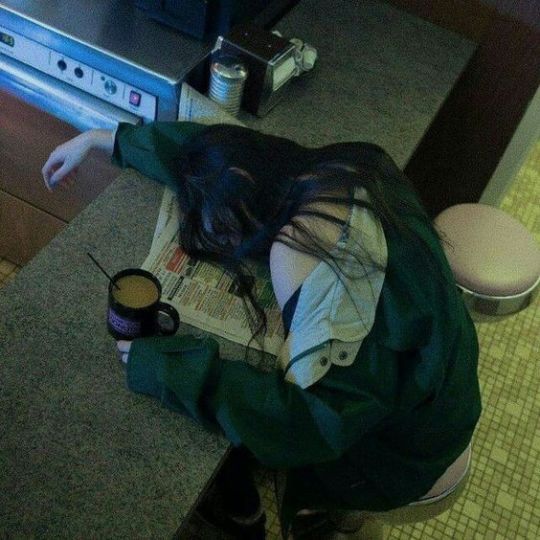
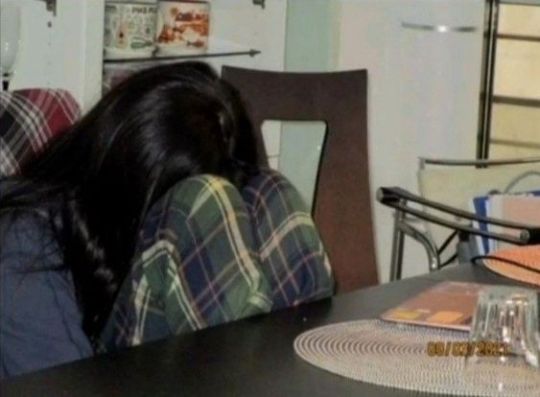
here's the reason you procrastinate
based on Fuschia Sirois' research
everyone procrastinate at some point. research suggests that almost 1 in 4 people procrastinate on a fairly regular basis, and the rates are even higher among college and university students ( 50% of them procrastinate regularly and about 85-90% do so occasionally ).
because procrastination is so common we tend not to put too much thought into it, in the end what is the problem? it's just delay.
well, it's not. actually procrastination is harmful delay ( so defined by the researchers ); it is a form of delay which is:
voluntary
unnecessary
involves important tasks which you intended to do
people often underestimate the consequences of procrastination and how debilitating and harmful it can be. if you delay dealing with ( for example ) your academic works, of course you can expect some negative results in that area, but what about the collateral consequences of it?
research has shown that people who have problems with procrastination have low physical and mental health and practice less healthy behaviors. they deal with depression, stress and anxiety.
just think about the enormous amount of stress that procrastination brings: first of all, constantly chasing deadlines. deadlines can nag anyone, even those who don't struggle with delaying, but then it ends, the job is turned in, and everything goes back to normal. for procastinators this is not the case, they will keep putting off important things and will constantly end up with an imminent deadline.
so, if it's so harmful for your health, why do people do it? some people think it's about laziness or poor time managment, but actually:
laziness isn't procrastination. if you're lazy you don't have the energy to do anything, instead procrastinators are always busy with a thousand non-essential tasks to do, in fact they avoid doing one specific task, not every task ( for example if i need to study, but i'm procrastinating it, i end up cleaning my room )
poor time managment it's actually a symptom of procrastination, not a cause.
from a psychological perspective the origins of procrastination are rooted in negative emotions and the urge to cope with them through avoidance. so actually procrastination is about poor mood managment, not poor time managment.
procrastination starts when we have a task that's unpleasant, but we have to do it. and we use procrastination then as a way to get relief from those negative emotions associated with the task, so basically it's not even about avoiding the task, but it's about avoid the negative emotions that we associate with the task.
we need to avoid stress and aversive feeling that come with the task, especially when we don't feel like we can manage those negative emotions at the moment. so we take the task, we put it aside, and it's instant relief. it's fast, it's easy and it works for a little while, then that sense of shame, guilt and self-blame starts to kick in.
so why do we keep procrastinating? for that sense of relief, because that made us feel rewarded and we tend to repeat behaviors that rewarded us. this can easily lead to a cycle of procrastination.
however, the negative thoughts that we have ( "why didn't i start earlier?", "i'm letting myself down" etc. ) don't actually make us take action. they just add layers of layers on pre-existing negativity.
so how do you get out of the procastination cycle?
go back to valuing your task, if it's so important that you do it, remind yourself why you are doing it
remember that we tend to overestimate the discomfort that a given challenge will bring us. probably your task isn't even that time-consuming, unpleasant and frustrating
be compassionate and and forgive yourself, it's an effective strategy to reduce the negative emotions associated with the task. you are not the first nor the last person to procrastinate, we are all human and we all make mistakes. research has shown that doing so reduces the risk of procastination.
hope you enjoyed this little explanation, here's my sources: https://youtu.be/xTEPNxx0MsA
#academia#college#education#note taking#school#student#study aesthetic#study blog#study inspiration#study motivation#study notes#study tips#studyblr#studyinspo#studyspo#chaotic academia#light academia#academic validation#dark academia#uni life#university life#university#motivation#procrastination#why you procrastinate
734 notes
·
View notes
Text






Finish what you started and transform your productivity
Recently i picked up a book i hadn't read in a long time for the past week i hadn't been able to work properly my tasks were going unfinished so i opened my cupboard and saw that book right in front of me. Then i read the whole book in just a one night and it sparked inspiration in me ..So i thought why not share everything i learned with all of you?
So I'm giving you guys a structured summary of Finish The Art of Following Through - Taking Action, Executing & Self Discipline by Peter Hollins -
1. The Importance of Execution
The ability to follow through allows you to create the life you desire rather than settling for the one you currently have. The process consists of focus, self-discipline, action, and persistence
2. Barriers to Follow Through
- Inhibiting Tactics: These include setting bad goals, procrastination, succumbing to distractions, and poor time management.
- Psychological Roadblocks: These encompass laziness, fear of judgment or failure, perfectionism driven by insecurity, and lack of self-awareness.
3. Staying Motivated
To remain motivated holds both external and internal motivators -
- External Motivators: These involve utilizing other people or resources to encourage action, such as accountability partners upfront investments and self bribery
- Internal Motivators: These focus on understanding personal benefits and improvements. Ask yourself questions such as How will this benefit me? and How will my life improve?
4. Developing a Manifesto
A manifesto is a set of daily rules that guide your actions so her are the some key rules -
- Rule 1: Identify if you’re acting out of laziness and avoid it.
- Rule 2: Limit yourself to three major tasks per day.
- Rule 3: Establish daily limitations and requirements
- Rule 4: Reaffirm your intentions through statements like I want I , will and I won't
- Rule 5: Reflect on the future consequences of not following through
- Rule 6: Utilize the concept of "just 10 minutes" to push through discomfort.
5. Follow Through Mindsets
- Mindset 1: Recognize the worthiness of your efforts.
⭐ Mindset 2: Become comfortable with discomfort.
- Mindset 3: Understand that learning comes from completing tasks.
- Mindset 4: Manage stress and anxiety effectively
6. Overcoming Procrastination
Procrastination can be managed through strategies such as:
- Temptation Bundling: Combine unpleasant tasks with enjoyable activities.
- Creating Momentum: Make starting tasks as easy as possible to gain momentum.
- Leveraging Fear: Use productive paranoia to spur action but cautiously
7. Minimizing Distractions
Create a work environment free from distractions and focus on
⭐ Single Tasking: Avoid multitasking to eliminate attention residue ( I will also create a separate blog on this topic i used to face this problem earlier and i have used many methods to reduce my habit of multitasking so i will write a blog about it. Don't worry )
- Batching Tasks: Group similar tasks to improve efficiency.
- Creating a Don't-Do List : Identify tasks to ignore and avoid ( This method is literally too much helpful )
8. The 40–70 Rule
This rule suggests acting when you have 70% of the necessary information as waiting for 100% is unrealistic
9. The Importance of Rest
Recognize the value of rest and relaxation as essential for mental recovery
10. Common Pitfalls
- False Hope Syndrome: Avoid unrealistic expectations and set achievable goals.
- Overthinking: Avoid excessive rumination and focus on taking action.
- Worrying: Concentrate on the present and control what you can.
11. Developing Daily Systems
Establish daily behaviors that promote consistency and long term success
⭐ Keep a Scoreboard: Track progress for motivation ( Ive been using this method for the past four days it literally shows me where I am making mistakes and what I need to do to complete my unfinished tasks )
By following these structured advice you can improve your ability to finish what you start and achieve your goals
If you have any questions or tips to share feel free to drop them in the comments in here to chat , Stay connected for more tips and insights thanks :)
#100 days of productivity#productivityboost#productivity challenge#productivitytips#study inspiration#studyblr#study blog#pink blog#20 days of april breaking the cycle challenge#desi studyblr#study motivation#it girl mentality#well being#pinterest girl#becoming that girl#clean girl#it girl#girlblogging#law of assumption#self development#self image#self improvement#thewizardliz#light academia#dark academia#dark academic aesthetic#chaotic academia#vogue paris#do it yourself#this is a girlblog
422 notes
·
View notes
Text
Writing Notes: Revision Strategies
When the time comes for revision, it can cause stress for writers of every level.
After all, it can be hard to delete or change words you spent hours writing.
To help reduce this stress, the following lists a few revision strategies.
READ IT ALOUD
Although it can be awkward at first, reading your work aloud can be one of the best revision strategies.
1. Catching Typos
When reading silently, your brain might skip over or correct small errors because it makes educated guesses about what the words are trying to say.
However, reading aloud forces you to slow down and see what is actually written.
2. Identifying Sentences That Flow Awkwardly
If you have ever read an incredibly long sentence in someone’s work, you know that it can be hard to follow the person’s train of thought.
These sentences are hard to catch in your own writing, but reading aloud will make them almost impossible to miss.
It is natural to take a breath in between sentences, so if you find yourself out of breath while reading aloud a single sentence, or having difficulty following the main idea/s of a sentence, the sentence likely needs to be revised.
SHARE YOUR WORK
It can be unnerving to ask others to read your work, but the payoff is more than worth it.
1. Another Reader Can Offer A New Perspective
It is easy to miss small details in your own work, especially when you have been looking at the same document for a long time.
Furthermore, because you are an expert on your own topic, you may not notice whether your essay effectively lays the groundwork necessary for those unfamiliar with the topic.
Ask a friend, family member, or a writing consultant to read your draft and offer feedback.
Moreover, telling your readers what to focus on ensures they pay special attention to the elements you want to revise.
2. Edit for Grammar Last
Even a grammatically-sound paper can fall flat if the content does not meet a reader’s expectations.
Your top priority during revision should be to make sure that you have made your point/s clearly.
Save the editing of punctuation and grammar until after you finish revising a draft.
3. Manage Your Stress
If you get a lot of feedback on what to revise, make and prioritize a list of the comments.
After taking the time to digest everything, focus on each individual item on your list.
Cross off items as you complete them so that you have a physical representation of the work you have finished.
TAKE TIME AWAY
Leave yourself enough room in your schedule to take time away from your completed rough draft; time away from your writing is an important part of revision.
1. Recharging Throughout the Process
It is taxing to begin revision immediately after finishing a draft and can discourage writers.
Giving yourself a break between writing and revising allows you to rest and recharge, so when you revise, you have more energy to spend on the process.
2. Refreshing Your Perspective
Taking a break allows you to distance yourself from your work so that you can read through it more objectively.
This fresh perspective allows you to see what might need clarification, refined organization, elaboration, or other revision work.
3. Coming Back from a Break
Instead of immediately jumping into sentence-level revisions during your first read-through of a draft, focus on reading your writing from start to finish at least once without interruptions.
This enables you to see how well your writing flows, catch any repetition, and determine whether anything might be missing.
Writing Notes & References
#writing notes#revision#studyblr#research#writeblr#dark academia#spilled ink#light academia#writers on tumblr#poets on tumblr#literature#poetry#writing prompt#writing motivation#writing inspiration#writing tips#writing advice#lit#writing reference#writing resources
395 notes
·
View notes
Text
40 sentences that will teach you more about nutrition than a $400,000 medical degree
From Brett Boettcher @brettboettcher1
40 sentences that will teach you more about nutrition than a $400,000 medical degree.
1) Meat, eggs and animal organs are the most nutrient dense foods on the planet.
2) Bone broth is loaded in collagen and helps repair the gut so you can heal from the inside out.
3) Saturated fat doesn’t cause heart disease, insulin resistance does.
4) Your ratio of triglycerides to HDL is a great indicator of mortality risk; the lower the better. ·
5) Protein is the most metabolically active macronutrient and it isn’t bad for your kidneys.
6) There isn’t quality evidence to show that dietary cholesterol impacts the cholesterol in your blood. ·
7) There is even less evidence to support that total cholesterol is bad for your health since it is inversely correlated to mortality risk. · 4h 8) Walking before and after meals is a great way to improve digestion and reduce blood sugar spikes.
9) Fiber is the last thing you need if you have IBS or diverticulitis.
10) Dairy is great for your health and its saturated fat intake is inversely correlated to heart disease.
11) Most nutritional recommendations were introduced based on profit margins, not health outcomes.
12) Calories in and calories out is all that matter, but some calories make you hungrier (sugar/grains). Other calories (protein) help you burn more calories.
13) Multi grain just means they took 2+ different terrible sources of grain and put them together into one product.
14) Cereal and bread for breakfast will spike your blood sugar and have you starving before lunch. Try Greek yogurt or eggs instead. ·
15) “Intuitive eating” and “listen to your body” makes no sense considering 88% of people are metabolically unhealthy and addicted to food. No one would say “intuitive crack use.”
16) Eating is a stress on your body; The less often you can eat, the healthier you’ll be.
17) Plan your meals around the protein source (with its natural fat) and add a small side of carbs if needed.
18) Eating for satiety is more important than relying constantly on willpower. Find filling foods and avoid foods with addictive properties (ultra-processed).
19) You don’t have to know how to cook. Grill a meat, sauté a green vegetable, bake a potato. Mix and match a million ways.
20) Eating many of the same foods every week isn’t perfectly optimal but it’s likely your best path to consistency and therefore success. ·
21) Becoming more insulin sensitive should be the focus of any health-related nutrition plan.
22) Salad dressings are one of the worst things you can eat for your health. High in calories and inflammatory industrial oils.
23) Eating 5x per day won’t boost your metabolism. If you are trying to gain weight, it’s an excellent strategy.
24) Bacon can be healthy, just avoid the processing with nitrates.
25) Cottage cheese and Greek yogurt are two of the best sources of protein per calorie.
26) Carbs are beneficial around a workout. But many sources of carbs are processed and easily overeaten. Focus on single ingredient foods.
27) You can’t be healthy at any size no matter what your mother or liberal arts professor said.
28) Eat a high protein meal before attending social events that are filled with junk food.
29) If eating out, order the food with the highest protein content.
30) The #1 reason people fail is that they don’t prepare. Meal prep, meal plan, have ready to eat protein sources. · 31) The food you eat directly impacts your mental health and processed foods are correlated with depression and mental illness.
32) Processed foods have been engineered to be as addicting as possible. Your taste buds can be retrained with natural sources.
33) “Plant-based” foods are made in laboratories and are an easy way to sell overpriced junk to consumers at high margin.
34) Eating 1 gram of protein per lb of ideal body weight daily will do more for your body composition than spending 30 minutes on the treadmill.
35) When in doubt, if it comes from the center aisles of the grocery store or has more than 3 ingredients, it’s not good for you.
36) Many foods labeled as “keto” “paleo” or “high protein” are far from meeting the intended definition.
37) Your gut is responsible for 70% of your immune system; feeding it sugar and other inflammatory foods is making you sick now and later.
38) Genetics play a role but over 90% of the country has a resting metabolism within 500 calories daily. Being fit is possible for everyone.
39) Flipping the food pyramid upside down is closer to healthy eating than the traditional suggestions.
40) Eliminating drinking your calories is the first change to make when trying to improve your health.
210 notes
·
View notes
Text



Mindset shift #2: Plateaus are part of the process and key to the success of longterm weight loss.



Plateaus are not roadblocks—they’re milestones. They show that your body is adjusting to the progress you’ve made so far. Instead of seeing them as failures, view it as a reward for your hard work. As your body giving you a break so you can recharge and reevaluate.
Why Are Plateaus Important to Your Weight Loss Journey?
When you lose weight, your body needs time to recalibrate:
• Metabolism: Plateaus prevent metabolic adaptation, where your body slows down calorie-burning to preserve energy.
• Hormonal Balance: Hormones like leptin (which regulates hunger) and cortisol (stress hormone) stabilize during plateaus, reducing stress on your body.
• Muscle Preservation: Slower weight loss during plateaus gives your body a chance to retain muscle mass.
What to Do During a Plateau:
1) Don’t Rush to Make Changes: Give your body time to adjust to recent weight loss before altering your diet or exercise routine. Sometimes, patience is the key to moving forward.
2) Focus on Restorative Acts: Prioritize sleep management and stress management, as both play a critical role in weight loss. Poor sleep and chronic stress can disrupt hormones like cortisol, which can hinder progress.
3) Celebrate Non-Scale Victories: Progress isn’t just about the number on the scale. Look for improvements in strength, stamina, mood, energy levels, or how your clothes fit.
4) Reflect and Reassess:
Use this time to observe your journey without judgment. Ask yourself:
• What has been working so far?
• What feels difficult, and how can I make it easier or more sustainable?
• Have I become too restrictive or too lenient?
• Are my diet and exercise routines still aligned with my goals and needs?
Plateaus are a chance to adjust and refine your habits to better suit your lifestyle.
5) Consider Upcycling Calories:
Upcycling calories involves alternating higher and lower calorie days to prevent your metabolism from adapting too much. For instance:
• Increase your calorie intake slightly on one day with nutrient-dense foods like healthy fats or complex carbs.
• Return to your usual calorie range on the following days.
This strategy can help reset your metabolism and push past a plateau.
6) Reassess Your Workouts:
Once you feel ready to adjust, start by varying your exercise routine:
• Incorporate new movements or activities to challenge different muscle groups.
• Ensure your workouts include strength training, which boosts metabolism.
• Avoid overtraining—intense workouts with insufficient recovery can increase cortisol, working against your weight loss goals.
7) Review Your Diet: Plateaus are a good time to take a closer look at your eating habits with curiosity and without judgment. Ask yourself:
• Are you eating enough proteins and fibres to help you feel full and well nourished? Did you eat enough healthy fats to ensure proper satiety?
• Are you eating more calorie-dense foods than you realize, such as cooking oils, granola, nuts, nut butters, cheese, or avocado?
• Be careful of low calorie foods. These items are often ultra-processed with artificial sweeteners. Sugar substitute can negatively impact your gut microbiome and insuline response—paradoxically causing you to gain weight. Focus on fresh whole foods and bake your own little treats, even of they are higher in calories they will be more satisfying.
• Have recent stressors, celebrations, holidays, or vacations led to more indulgences than usual?
• Are you underestimating portion sizes or the amount of food you’re eating?
If you feel comfortable and it won’t negatively impact your mental health, consider tracking your food intake for a couple of weeks. Focus on accuracy by weighing your food rather than using cups or spoons, especially for non-liquid items. Be gentle and non-judgemental. The goal is to understand not punish.
If tracking feels too overwhelming, focus instead on visual portion control (e.g., smaller plates, filling half your plate with veggies, or limiting high-calorie extras like dressings).
#fitness#2025#health and wellness#weight loss#wellbeing#fitblr#wellnessjourney#losing weight#glow up#health & fitness#motivation#self care#eating healthy#healthylifestyle#becoming that woman#becoming that girl#that girl#becoming the best version of yourself#becoming her#it girl#glow up 2025#weightloss
115 notes
·
View notes
Text
Unhinged theory:
Sanemi has some form of anxiety
Let me explain:
We all know Sanemi is depressed but I think he has some kind of anxiety disorder too. The evidence is based on two categories:
Sleep Deprivation
Anxiety & Stress
Sleep Deprivation
For this point, I made the diagram below(yes, I have no personal life 😔).
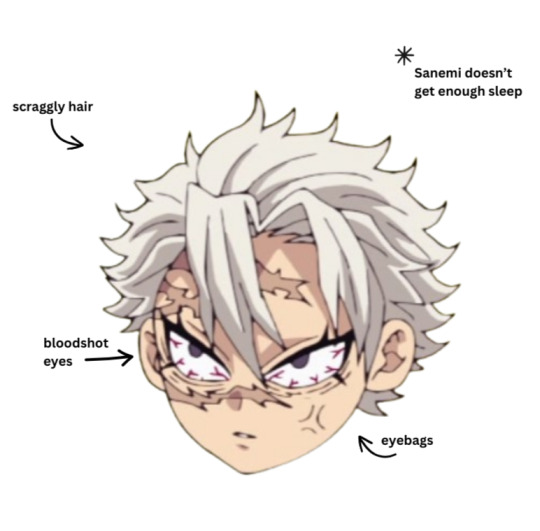
The main symptom that supports the sleep deprivation theory is his bloodshot eyes. Sanemi's eyes are always bloodshot and he always has eyebags, even when he's in a relaxed state (you can tell because his 'eye dots' are larger) which could be an indication of lack of sleep.

His scraggly hair could also be a symptom because aside from Giyuu (who has depression) he's the only Hashira that doesn't seem to take care of his hair.
Another observation I made is that Sanemi is always leaning on something or hanging on something. He also puts his chin on his hand/palm, I do that when I'm tired too.
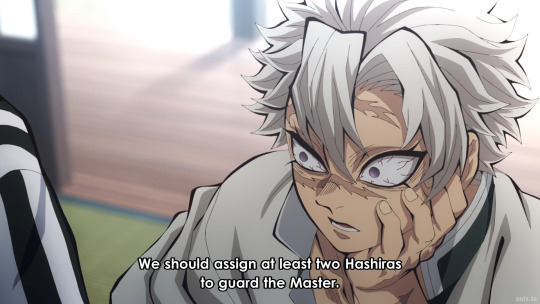








Or sometimes, he hangs on to his belt.

It seems like a stretch but he does these things often and he's the only character -that I know of- that does this. It could just be a character quirk though, due to his ghetto upbringing.
He's also the only one visibly tired after the training session between him, Obanai, and Muichiro.
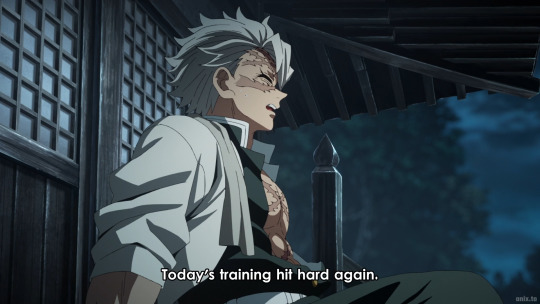
I noticed in the first episode of the Hashira Training Arc right after the Infinity Fortress trial period expired and he ended up stabbing the floor, he immediately sat down. Why? Seems like a weird thing to do .

Then there's all the wobbling he does in the mansion while fighting the demons.



Anxiety & Stress
The evidence for this has to do more with his behavior and actions, especially his anger and impulsive decisions. Most people associate anxiety with fear which makes sense but anxiety can also manifest as anger too.
From the article linked below,
Anxiety causes anger for several reasons. At its peak, anxiety can cause overwhelming emotions and thoughts that make you lash out in an attempt to regain your sense of power in a stressful situation.
Anxiety as anger can be triggered by:
Flight-or-fight response - when he feels threatened
Emotional exhaustion - from his past trauma and loss
Perceived loss of control - encounters with Tanjiro(bestest boy ❤)
Cognitive distortions - his belief that he's a monster, that he has to shoulder things by himself etc.
The perceived loss of control I feel is a defining factor for the two drastic decisions he's known for:
Stabbing Nezuko – A Corps member has been harboring a demon. In his mind, the Corps has been infiltrated, and Tanjiro’s probably been feeding Nezuko people.
Trying to poke Genya’s eyes out – His brother has been eating demons. He probably fears that Genya will turn into a demon and then he will have to kill his only surviving family member. Or that Genya will die early if he continues eating demons and fighting.
When it comes to stress, he displays the following symptoms:
Irritability
Anger
Grumpiness
Always on edge
Restlessness
Impatience
His impatience with others and with himself, with him trying to get the mark as fast as possible also points to anxiousness. His white hair too! He hair probably turned prematurely grey due to environmental stress, taking care of his family, worrying about keeping them safe, his violent upbringing and probably lack of nutrients from food because he would most likely have his younger siblings eat all the food instead of him.
So everything is all tied together. His anxiety from past trauma contributes to his present anxiety which prevents him from getting proper sleep and increases his stress levels which leads to even more anxiety.
But how does he fight and stay so alert then?
I think his anxiety disorder is high functioning plus he takes a lot of matcha tea which has caffeine. His constant eating of ohagi probably also keeps him hyper too.
Another piece of evidence that solidifies my theory is the appearance of his eyes in the last chapters.
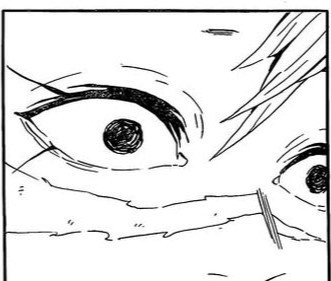
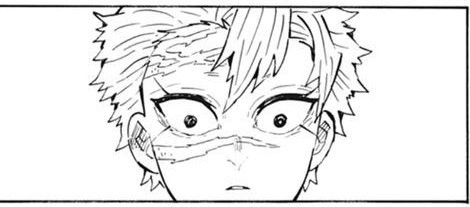

Probably had that sleep he hadn't gotten in years.
In Conclusion, our boy Sanemi has some form of Generalized Anxiety Disorder and is highly stressed due to lack of sleep which is why he acts and looks like a crackhead. He needs some sleep and possibly to get laid.
#demon slayer#kimetsu no yaiba#kny#sanemi shinazugawa#just unhinged#unhinged theory#i have no lifeeeeeeeee!#demon slayer anime#kimetsu no yaiba anime#kimestu no yaiba#hashira#kny sanemi#shinazugawa sanemi
228 notes
·
View notes
Text
Effective Study Routine: Tips on How to Study Effectively for the Upcoming Exams Without Cramming.
Exam is approaching, many students is already cramming, but cramming is not a good decision if you want a higher score. It's not the most effective ways to retain the topics that you have studied. You can start planning and have a strategies so you don't need to stay up all night studying. Here's some tips on how to study effectively for the upcoming exams without cramming:
1. Create a Study Plan
To avoid cramming on the day before the exams, It is effective to have a study planner to stay organize, where you can plan the topics and lesson that you need to study without feeling overwhelmed. You make this Study Plan 2 or 3 weeks before your exam. You can break down the topics. Start with the hardest topics. You can use an app, planner, to-do list and many more to track the lessons that you need to study.
2. Set a Goal
Making a goal can make you more productive. A goal should have a clear timeframe. You can set a deadline to help you stay focused and to avoid procrastinating. You can study 3 to 5 topics a day.
3. Avoid Distraction
Having a lot of distraction can make you lose your focus and motivation to study. Go to a quiet place and comfortable area, make sure the area is clean and organize to help you concentrate on the topics. Avoid using your gadgets and other technologies, this can pull away your attention and can reduce your productivity and focus.
4. Active Learning
Learning is not just memorizing the material. Understand the materials and do some exercises to test your learning. This includes problem-solving, discussion,and applying what you've learned to real-life situation. This can help understand the topics better by encouraging you to think critically.
5. Consistency
Being consistent can have a huge impact in learning. Instead of cramming, you can study everyday to avoid being overwhelmed by the topics and lessons that you need to study. This can help you retain your memory. By reviewing everyday you're not only ensuring that the lessons stays in your mind but this can also boost your confidence. By following your study plan you're also being consistent.
6. Sleep Early
Having a enough rest is essential if you have an exam. Sleeping early before the exams can help you improve your performance. Having enough sleep can help you have a better focus and concentration, stronger immune system, and reduces anxiety and stress.
7. Be positive
Positivity can have a great impact in your performance. Positivity can fuel your motivation and help you stay focused on the exams. This also reduces stress, a positive mindset can lower anxiety making the exam easier to answer. Surround yourself with positivity, surround yourself with the people who inspire and encourage you and do positive self-talk.
By adding these habits in your daily routine not just when exam is coming, this can guaranteed you a higher grade and high confidence in answering any of your school works or exams.
74 notes
·
View notes
Text
The Environmental Protection Agency plans to eliminate its scientific research arm, firing as many as 1,155 chemists, biologists, toxicologists and other scientists, according to documents reviewed by Democrats on the House Committee on Science, Space and Technology.
The strategy is part of large-scale layoffs, known as a “reduction in force,” being planned by the Trump administration, which is intent on shrinking the federal work force. Lee Zeldin, the administrator of the E.P.A., has said he wants to eliminate 65 percent of the agency’s budget. That would be a drastic reduction — one that experts said could hamper clean water and wastewater improvements, air quality monitoring, the cleanup of toxic industrial sites, and other parts of the agency’s mission.
The E.P.A.’s plan, which was presented to White House officials on Friday for review, calls for dissolving the agency’s largest department, the Office of Research and Development, and purging up to 75 percent of the people who work there.
The remaining staff members would be placed elsewhere within the E.P.A. “to provide increased oversight and align with administration priorities,” according to the language shared with The New York Times by staff members who work for Democrats on the House science committee.
Molly Vaseliou, a spokeswoman for the E.P.A., said in a statement that the agency “is taking exciting steps as we enter the next phase of organizational improvements” and stressed that changes had not been finalized.
“We are committed to enhancing our ability to deliver clean air, water and land for all Americans,” she said, adding, “While no decisions have been made yet, we are actively listening to employees at all levels to gather ideas on how to increase efficiency and ensure the E.P.A. is as up to date and effective as ever.”

Representative Zoe Lofgren, Democrat of California, said that the Office of Research and Development was created by congressional statute and that dissolving it would be illegal.
Representative Zoe Lofgren of California, the top Democrat on the science committee, said that without the Office of Research and Development, the E.P.A. would not be able to meet its legal obligation to use the “best available science” when writing regulations and considering policy. She also said that the office was created by congressional statute and that dissolving it would be illegal.
“Every decision E.P.A. makes must be in furtherance of protecting human health and the environment, and that just can’t happen if you gut E.P.A. science,” Ms. Lofgren said in a statement. She said that the first Trump administration had weakened the agency’s scientific research in order to relax regulations against polluting industries. “Now this is their attempt to kill it for good,” she said.
The E.P.A.’s science office provides the independent research that undergirds virtually all of the agency’s environmental policies, from analyzing the risks of “forever chemicals” in drinking water to determining the best way to reduce fine particle pollution in the atmosphere. It has researched synthetic playground material made from discarded tires; found that hydraulic fracturing, or fracking, can contaminate drinking water; and measured the impact of wildfire smoke on public health. The office also helps state environmental agencies figure out how to address algae blooms, treat drinking water and more.
Its findings tend to support stronger regulations to protect against exposure to air pollution, hazardous chemicals and climate change. And that has made it a target of many industries. Eliminating the office would serve the Trump administration’s dual goals of reducing the size of government while potentially easing the regulation of the chemical and fossil fuel industries.
The science office was also criticized by Project 2025, a blueprint for overhauling the federal government that was produced by the Heritage Foundation and written by many who are serving in the Trump administration.
The chapter on the E.P.A. accuses the science office of being “precautionary, bloated, unaccountable, closed, outcome-driven, hostile to public and legislative input, and inclined to pursue political rather than purely scientific goals.”
It calls for eliminating programs within the science office, in particular the Integrated Risk Information System, which evaluates the human health effects of exposure to toxic chemicals and uses that information to form the basis for restrictions on their use. Industries regulated by the E.P.A. often push back against that research. A bill introduced by Senator John Kennedy, Republican of Louisiana, and backed by industry groups seeks to prevent the E.P.A. from using the research.
“It is an assault on science,” said Jennifer Orme-Zavaleta, who ran the E.P.A. office under the first Trump administration.

Lee Zeldin, the administrator of the E.P.A., in Altadena, Calif., last month. He has said he wants to eliminate 65 percent of the E.P.A.’s budget.
Shuttering the office would cost jobs across the country, particularly in places like North Carolina and Ada, Okla., two of the places where the agency operates major research labs, she said. In addition to chemists and biologists, the science office also employs physicians, nurses, hydrologists and experts who focus on plants, soils and wetlands.
Chris Frey, who led the Office of Research and Development under the Biden administration, said eliminating it would create a vacuum that would allow an administration to impose any policies it wanted to.
“It’s certainly convenient for certain stakeholders to have O.R.D. silenced,” Mr. Frey said.
The American Chemistry Council, which represents chemical manufacturers, said in a statement that it supported the E.P.A.’s having the “resources, technical staff and subject matter expertise needed for the agency to meet its statutory requirements.”
More than 40 former E.P.A. officials who served in Republican and Democratic administrations plan to send a letter on Tuesday to Mr. Zeldin warning that steep cuts will render the agency unable to meet its mission.
“Policy changes are to be expected from one administration to the next, but not the dismantling of E.P.A.,” the officials wrote in the letter, a copy of which was obtained by The Times. “If the administration does not agree with the laws Congress has passed and the programs it has funded, it should work with Congress to seek changes, not unilaterally and recklessly freeze, delay or eliminate funding.”
#project 2025#Elon musk#donald trump#doge#EPA#environmental protection agency#pollution#climate change
59 notes
·
View notes
Note
So, I went to a game store, and I asked if there were any good beginner games for someone who tried the DnD Essentials Kit and found it too complicated, and you'll never guess what one singular game they suggested!
THEME: Simpler Games than DND.
My friend, I’m not a very good guesser, but I hope that I am able to present you with some games that will give you what you’re looking for.

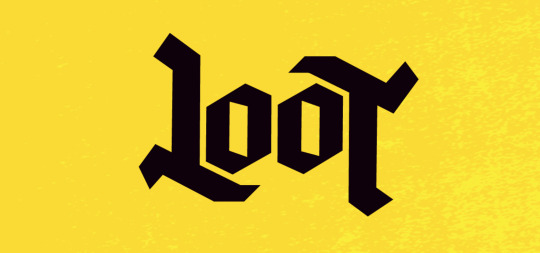
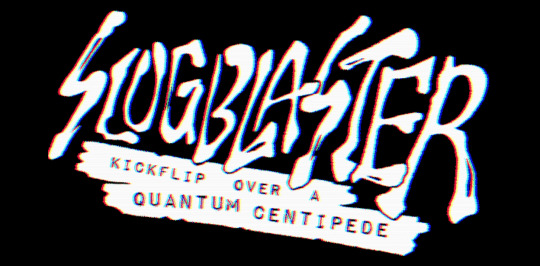

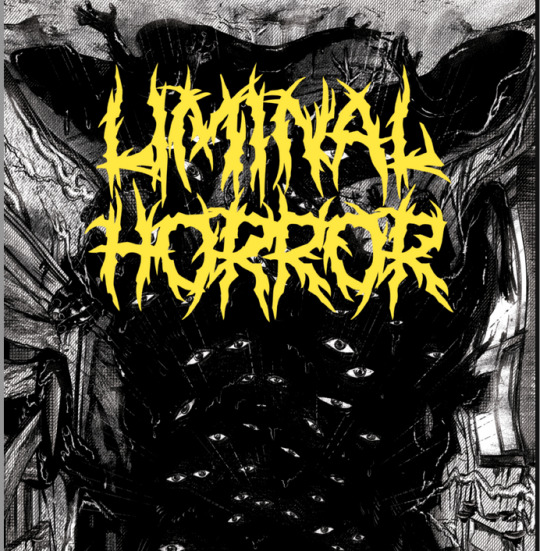
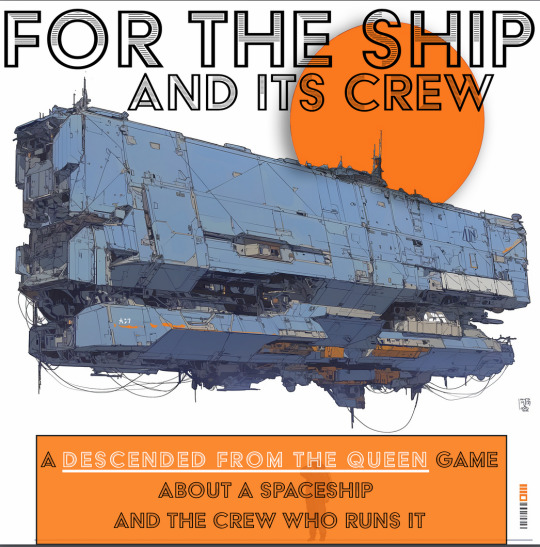
24XX: Chaos Unit, by polyhedralmice
Deep under the busy streets of Sapien City is the headquarters of the Vermin Squad, the espionage wing of a secret organization of urban animals known as the CHAOS Unit. They capitalize on the fact that vermin are virtually invisible human inhabitants of the city and use they use their street smarts to run vital missions for the unit. Raccoons, opossums, pigeons and squirrels each play specific roles and together form teams that take on the most vital of missions. From intercepting life-saving pizza orders to rescuing their colleagues from the dastardly Animal Control, there is no task too daunting for the brave animals of the Vermin Squad. Every night teams are sent out on their missions, and this is the story of one of those teams. Nothing will stop these brave agents from successfully completing their tasks (except maybe a humane trap baited with peanut butter).
CHAOS Unit is a spy themed hack based on Jason Tocci’s 24XX.
24XX games are great for groups that love different-sided dice. In general, you only have a few skills for your character that are outside the normal parameters (upgraded to d8 - d12), and the success threshold is the same for pretty much every roll. The challenges and situations of any given scenario are typically presented as roll tables, allowing the GM to come up with an adventure just by rolling a few dice.
CHAOS Unit has just a few character options, some simple gear options, and a comparatively light-hearted premise. It’s a great introduction to the system, and learning how to play one 24XX game makes every other 24XX game a piece of cake to learn, even if they include new rules.
Loot, by Gila RPGs.
LOOT is a fantasy TTRPG by Gila RPGs that combines looter shooter mechanics with west marches vibes. When a rebellion toppled a lich overlord and torn down his city, the people were left with a lot of loot, and a lot of problems. That's where you come in.
Get some friends together, fight some monsters, deck your characters out in cool loot. Do it all over again.
Even though LUMEN uses grid-based combat, your character’s stats are simplified, reduced to a few things: health, armour, and three action types: force, flow & focus. Your stats themselves come from the items that your carry - your loot.
Your loot is organized through slots on your character sheet: you can only carry so much, so you’ll have to think carefully about what kind of stat bonuses and abilities you want. I find that a visual inventory can make it easier to keep track of everything you have, and can help some players learn how to think strategically. If you like the fantasy and strategy that exists in D&D but don’t want to do nearly as much math, you might be interested in LOOT - although the lack of dice is certainly a big change.
Slugblaster, by Wilkie’s Candy Lab.
In the small town of Hillview, teenage hoverboarders sneak into other dimensions to explore, film tricks, go viral, and get away from the problems at home. It’s dangerous. It’s stupid. It’s got parent groups in a panic. And it’s the coolest thing ever.
This is Slugblaster. A table-top rpg about teenagehood, giant bugs, circuit-bent rayguns, and trying to be cool.
Forged in the Dark games can be tricky to introduce to a new table, but Slugblaster is one of a few that I think can do the job. It’s a streamlined version of the system, that takes away a lot of the crunch that comes from Stats, Position, and Effect, and boils it all down to Kick and Boost. It also streamlines harm into 2 levels of slams, and keeps stress and downtime to a procedure that you can follow step-by-step when you finish a run. Finally character creation is very easy: you only make few choices in terms of abilities, and many of these choices are descriptive, rather than mechanical.
One thing I’ve noticed about games with “simpler” rules systems is that they typically do require a bunch of improv, which can be scary for new GMs. Slugblaster isn’t that different in this regard, but it does have a few things you as a GM can prepare beforehand if you want to make things easier for yourself. For example, you can set up your map of the different dimensions beforehand, including the doorways that the teens can get through. If you know that the teens get back to your home dimension without going through Operablum, then you can prepare a few location - specific threats to confound the teens as they try to get back in time for dinner.
Another strength of these games is that typically, if a player wants to do something, they just have to be able to describe how they’d do it - you can then work backwards using the gear & resources on your sheet to give you some dice to roll, as well as the logic of the game world, to figure out what happens next.
Lady Blackbird, by John Harper
Lady Blackbird is on the run from an arranged marriage to Count Carlowe. She hired a smuggler skyship, The Owl, to take her from her palace on the Imperial world of Ilysium to the far reaches of the Remnants, so she could be with her once secret lover: the pirate king Uriah Flint.
Lady Blackbird is the first game I ever played, and it’s a game I fell for - hard. It involves rolling pools of dice that you pull from descriptive collections of tags assigned to pre-generated characters. It simplifies game-play by taking away the step of character creation, and gives the group a pretty solid story to pick up and follow wherever your heart may lead.
While the rules of the game are fairly simple, I think that as a GM, you’re going to need to be comfortable with a fair bit of improv to make this work. The game has some excellent pieces of advice on how to come up with scenes for the characters, and even includes some example complications to throw at the party. I’m really glad this was my first game because from the beginning, it affirmed that roleplaying games are a communal experience, and even if the characters and the starting scenario are already written for the group, the players have a lot of freedom to decide who their characters are, and what they’re going to value.
Liminal Horror, by Goblin Archives.
There’s a strange comfort to ambiguity. To stand at the threshold between states of what was and what’s next, to inhabit the places of transition. But you’re never truly alone here. There are things that hunger within the dark places. Strange creatures and mysteries lie in wait and tumbling into the wrong place at the wrong time may put you on the path towards doom.
Grab your flashlights and blood splattered jackets as you try to make it through the night. Beware, snapping bone and rending flesh are often the simplest outcome. While there may be great power within these places… not all mysteries can be solved and not everyone can be saved. Above all, there are fates far worse than death.
LIMINAL HORROR is a rules-lite, adaptable Survival-Horror roleplaying game about normal characters and their struggles against the things that go bump in the night. The game focuses on surviving the weird and Investigating horrors while blending simple, old-school inspired rules with modern, narrative first principles. Survival is not guaranteed and those that do make it through the night are often forever changed.
In Liminal Horror, character creation is rather quick, often easily generated using a few dice rolls. For most tasks, your characters will roll a d20 and try to get a number lower than one of their three stats, so when you get started, teaching the game should be pretty simple. Of course, since it’s a horror game, there’s more than just trying to roll under a stat: characters will find themselves subject to the consequences of being exposed to horrors that are far beyond the limits of human experience. As a result, characters will find themselves dealing with two different kinds of harm: stress & fallout. These two harm systems will make the stakes feel real, and they’ll also inflict changes on your characters as you play.
Liminal Horror has a few things going for it. The basic rules are fairly straightforward, but they’re also free. The game is meant to be paired with pre-written adventures, which often include place descriptions, NPCs, and adventure-specific consequences to torture the characters with. A lot of the adventures available come with a price tag, but if you want to try out the system, there’s a couple of free ones out there - I recommend Messenger National Park, by capacityforwonder.
For the Ship And Its Crew, by Adeline Fowl Games.
We've crewed this Ship for years together. We've seen wondrous sights, gotten ourselves into seemingly insurmountable trouble, and have owed our fair share of creds to the wrong people. And yet, still, we fly. But after all these years, our past may be catching up with us. As the missiles tear across starlit space, we'll be forced to ask ourselves: What will we do, for the Ship and its Crew?
This is a hack of For the Queen, which mostly involves answering prompts, using something like a card deck, or in this case, a digital hosting service. Your group is telling a story by taking turns answering questions, which makes the game fairly easy to teach, even to people who don’t have a lot of roleplaying experience.
These kinds of games can also be played very quickly, which might also make it easier to introduce to folks who aren’t used to sitting around a grid and calculating resources for 2+ hours.
Other Recommendation Posts To Check Out…
Easy To Teach Recommendation Post
First Time GMs Recommendation Post
Little Reading or Writing Required Recommendation Post
100 notes
·
View notes
Text
Why You Need a “Hot Girl Reset” Every Single Week
by Soleau Club


If you’re trying to look good, feel good, and live a life that’s giving main character on a yacht in Capri—you need a weekly reset.
Not want. Need.
Because no matter how hot, healed, or high-functioning you are, life gets chaotic. Your skincare piles up, your inbox is scary, and you forget who you are mid-week (been there, babe).
That’s where the Hot Girl Reset comes in.
So, What Even Is a Hot Girl Reset?
It’s not just cleaning your apartment or doing a face mask. That’s maintenance. A Hot Girl Reset is a full system recalibration. A ritual. A vibe. A weekly ceremony of self-devotion.
It’s how you become that girl—again and again.
Step 1: Detox Your Space (and Energy)
Start with your physical environment. Because if your room looks like chaos, your brain is chaos.
Strip your bed and do fresh sheets
Open the windows, let the light in
Wipe down everything (even your vibe)
Light incense or palo santo like you’re banishing demons (aka last week’s stress)
Then detox your energy:
Sage your aura with sound bowls or Beyoncé
Take a long, borderline indulgent shower with body oil and scalp massage
Delete those texts. You know the ones.
Step 2: Reorganize Your Life Like It’s an Aesthetic TikTok
Hot girls don’t run on chaos. They run on calendars and rituals.
Plan your week in your cute planner (yes, stickers allowed)
Make a grocery list of bloat-free, glow-boosting foods
Set 3 goals max—because overwhelm is not chic
Put your vitamins in that little pill organizer (we’re grown)
Bonus points if you color-code. Double bonus if you film it for content. Triple if you romanticize the whole thing with a matcha latte in hand.
Step 3: Do a “Look Good, Feel Good” Ritual
This is where it gets juicy. Reset your beauty, baby.
Dry brush, exfoliate, and oil your body like you’re a Greek goddess
Wash your makeup brushes (yes, you’ve been putting bacteria on your face)
Put on a hair mask and pretend you’re in a spa commercial
Pick your outfits for the week that scream rich, rested, and unbothered
We’re not just resetting—we’re rebranding. Every Sunday.
Step 4: Mentally Clock Out of Chaos
Hot girls protect their inner peace like it’s Prada.
Journal: “What am I releasing this week?” + “What am I calling in?”
Meditate—even if it’s just 4 minutes in silence with your hand on your heart
Listen to a podcast that makes you feel elevated, not overstimulated
Sip a sleepy girl mocktail and go to bed early (beauty sleep is a business strategy)
Why This Actually Works
When you reset weekly, you:
Reduce anxiety (because your life’s not a mess)
Boost confidence (because you’re in control)
Show your nervous system it’s safe now
Reconnect with your vision board self (the baddie you’re becoming)
Your Hot Girl Reset is your anchor. Your power source. Your soft armor.
It says, “I respect myself too much to stay in chaos.”
Final Thoughts from Soleau Club
This isn’t about being perfect. It’s about being intentional. It’s about saying: “I deserve a life that feels like a Pinterest board—because I built it that way.”
So light that candle. Put on your spa playlist. Romanticize the mundane.
And remember: A Hot Girl Reset is not a luxury. It’s a lifestyle.
Follow @soleauclub for daily hot girl health, aesthetic wellness rituals, and biohacks you’ll actually want to try.
#holistic wellness#pink pilates princess#wellness#wellness girl#that girl#vanilla girl#dream girl#it girl#glow up#self love#self care#self development#pink pilates girl#pilates aesthetic#pinterest girl#becoming that girl#clean girl#it girl energy#glow up journey#glow up tips#glow up diaries#glow up era#glow up guide#level up#leveling up#level up journey#becoming her#level up mindset#level up tips#leveling up advice
32 notes
·
View notes
Text
I really don't like how people completely reduce Link and Zelda to "bossy controlling princess" and "idiot feral"
Zelda is repeatedly mentioned as being loved for being hands-on, caring and kind with her people. Not for her status. She never lords over people. "Orders" from her turn out to be people completely misinterpreting her life advice and taking it too seriously, and an impostor.
Link is not stupid. He used to be responsible for other knights and strategies as a captain. Age of Calamity even shows this a bit. He solved hundreds of Sheikah and Zonai shrines and figured out the technology. Sure, he isn't as smart as Zelda is, but he isn't stupid either. Maybe when he had just woken up from the Shrine of Resurrection with total memory loss, but he canonically has most of his important memories back considering BotW's True Ending is canon to TotK. Consider as well that he genuinely listens to her rambling intently. He has almost certainty learned from her. Consider as well that they are now both teachers at the Hateno school, where Link helps teach history, not just cooking.
Y'all really took one cutscene each of Zelda yelling at him a century ago as a stressed, frustrated 16 year old, and Link eating rocks for comedy in Age of Calamity/fandom korok jokes, and made it their sole personality traits as though they are just more or less identical to the 80's cartoon Link and Zelda with no other personality traits
#link#princess zelda#tears of the kingdom#breath of the wild#tloz#loz#legend of zelda#botw#totk#breaking my silence
251 notes
·
View notes
Text
Autistic Shutdowns
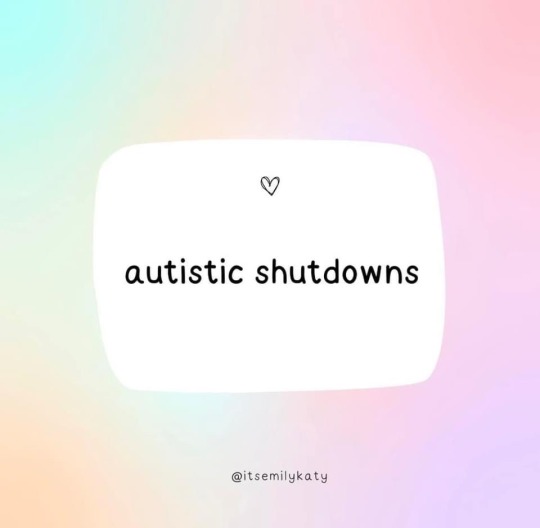






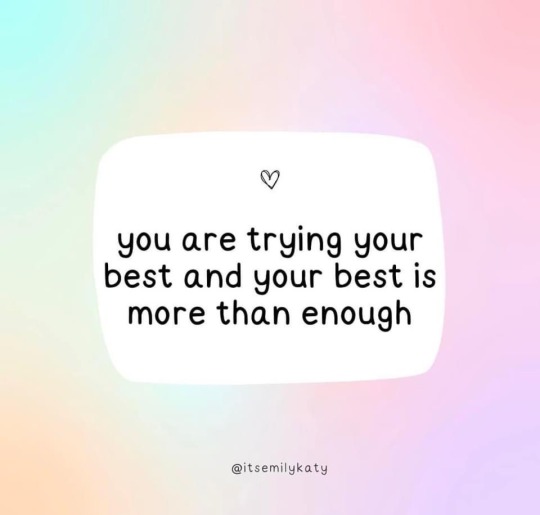
Text will be below:
autistic shutdowns
What are autistic shutdowns?
Shutdowns are involuntary responses to being overwhelmed. Whereas meltdowns usually result in an external reaction (more of a 'fight' response), shutdowns can be more internal (more of a 'freeze' response) but one can lead to the other.
A shut-down means that the stress, overwhelm and exhaustion is so high that our brains and bodies literally shut down.
This can look different for different individuals.
Shutdowns may look like...
Extreme tiredness
Hiding somewhere quiet and dark
Loss of outward emotion
Not being able to move
Lack of coherent sentences
Not speaking
Withdrawing
Complete loss of energy
Laying down still even if awake
Unresponsiveness
Numbness
Common shutdown triggers:
Sensory overload
Stress exceeding coping ability
Change in plan or routine
High anxiety
Exhaustion from masking
Unmet needs
Social exhaustion
Feeling unable to meet expectations
High emotions or overthinking
Tiredness
Rejection sensitive dysphoria
High demands
What can help during a shutdown:
Finding a quiet space
Being given time to recover - either with a 'safe person', pets, or alone
Reducing sensory input
Anything special interest related that you can engage with
Calming music or meditation
Weighted blankets and headphones
People around you understanding
How you can help someone who is having a shutdown?
Guide them somewhere quiet if they can move
Reduce demands
Remove any anxiety triggers
Give them time and space to recover
Speak calmly
Provide any strategies you know help them - special interest related, calming activities, fidget toys.
After a shutdown
It is important to remember that your body has just experienced an involuntary reaction to high stress and overwhelm - and that is not your fault.
You might feel embarrassed or ashamed, but you need to now take care of yourself to avoid burnout, as repeated shutdowns or meltdowns can be more likely to lead to burnout.
you are trying your best and your best is more than enough ♥️
The Autistic Teacher
#autism#actually autistic#autism and shutdowns#what to do during a shutdown#shutdown triggers#how to help during a shutdown#autism and mental health#feel free to reblog#source: the autistic teacher (facebook)
666 notes
·
View notes